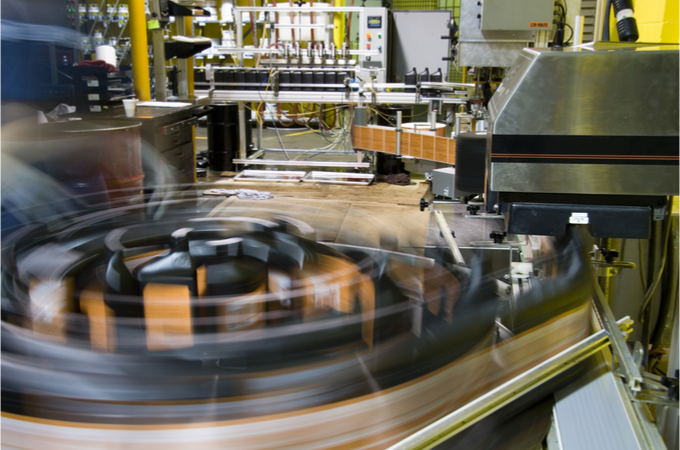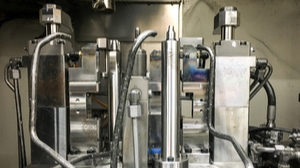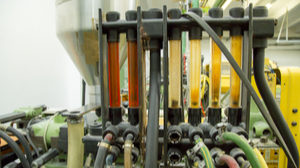
Injection molding cycle time is likely to be one of the biggest factors in the efficiency of your process — both from a time and a cost standpoint. Of course, since time is money in any manufacturing process, what this really means is that looking into ways of reducing cycle time in your injection molding process can have a major impact on your bottom line. In order to help you address any inefficiencies and identify areas of potential improvement, the steps below include useful information on how to reduce cycle time in injection molding.
The Injection molding cycle has three major steps:
- The injection stage (where heated material is fed via pressure into the mold and cavities)
- The holding or packing stage (when all material for a cycle has been fed into the mold, and continued pressure is applied to ensure that cavities are completely filled and any potential shrinkage of the material as it cools is addressed)
- he cooling stage (when the material cools to a solid form and pieces are ready to be ejected)
Each of these steps has potential efficiencies that can reduce overall cycle time. Though the cooling stage is by far the most time-consuming step in the injection molding cycle, and thus the area where the biggest impact can be made in reducing those times. We’ll first go through some general tips and concepts that can reduce your cycle in the injection molding process. We’ll finish with several points to consider in creating a more efficient (and shorter) cooling process.
Six Ways To Reduce Cycle Time In Injection Molding
- Keep wall thicknesses to the minimum required for your part or product to function effectively. This minimalist approach to part design means that less material will need to be injected into mold cavities, thus reducing injection time incrementally (which can, over many cycles, add up to material time savings). Just remember to account for the required strength of your product walls, and to adhere to best design practices for minimum wall thicknesses. We’ll come back to wall thickness later, as well — since it can have a big effect on cooling time.

- Ensure that your machine is fine-tuned and up to the tasks of proper injection pressure and speed. Older injection molding machines may suffer performance issues, including variable or inconsistent injection pressure and speed (also known as fill time). This can lead to situations where machines must take a longer period of time to inject the same amount of material as a new or better-maintained machine. Meaning, your cycle times are not as fast as they can be. Errors in pressure or fill time can also lead to more rejected parts, which increase your overall production time (and create a longer effective cycle time).
- Invest in people — not just in machinery. Talk to enough people who have been in the injection molding business for a while, and eventually you’ll hear the same adage: “It’s as much an art as a science.” Successful, efficient injection molding isn’t just a matter of setting up a machine and letting it run. There are any number of small tweaks and adjustments that can be made. They can’t all be read in a book or looked up on a chart. Sometimes it’s even just a matter of being experienced with one particular machine. Experienced, talented injection molding engineers will have the ability to identify — almost intuitively — the small adjustments in variables such as injection speed, cushion, holding time and more that can have a big impact on part quality and cycle times. Some of the best people are probably right in your own facility — so be sure to give them opportunities to train others and share their knowledge and talents.
- Consider your material selection. Some materials will have higher fill pressure ratings or higher flow rates. Meaning, they can get into the mold faster, and fill all cavities faster. Material selection is often overlooked or written off, but be sure to research whether different resin properties may be suitable for the purposes of your part. This research can thus help reduce your cycle times along the way.
Now that we’ve looked at some big picture ways to reduce cycle times, let’s focus on efficiencies that can be found in the cooling stage.
- Revisiting wall thickness. Not only can reduced wall thickness get your parts through the injection stage more quickly, but it can have a direct effect on cooling time. In fact, cooling time is often represented as a direct function of the square of the wall thickness — lower thickness means less cooling time. Again, while adhering to the strength specs of your part, it’s important to remember to keep wall thickness to the minimum that’s viable.
- Consider tooling design. Aside from the material, the mold itself is the biggest factor in cooling time. A well-designed mold will allow for efficient and effective distribution of water and air — the two most common cooling agents. Cooling channels should be well-maintained and regularly cleaned to ensure that parts cool as quickly and consistently as possible. Inconsistent cooling is a major factor in part defects that lead to rejected parts (and more machine time, which equals a longer effective cycle time).

- Be sure that the mold is insulated from hot runners. Without insulation, heat from the material flowing through the hot runners is likely to transfer and stay with the mold itself. Therefore, it will be that much more difficult — and time consuming — to cool down. Unexpected heat in the mold can also affect material temperature and, by extension, flow rates and other factors that contribute to successful injection and packing. Proper insulation ensures that temperatures and other physical properties remain predictable and effective.
As you can see, there are many areas where cycle times can be reduced in your injection molding process — the cooling stage is just the beginning. Many of these best practices will also help reduce part effects. In turn, reducing overall production time and lowering costs for you and your customers.




